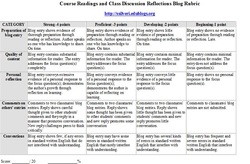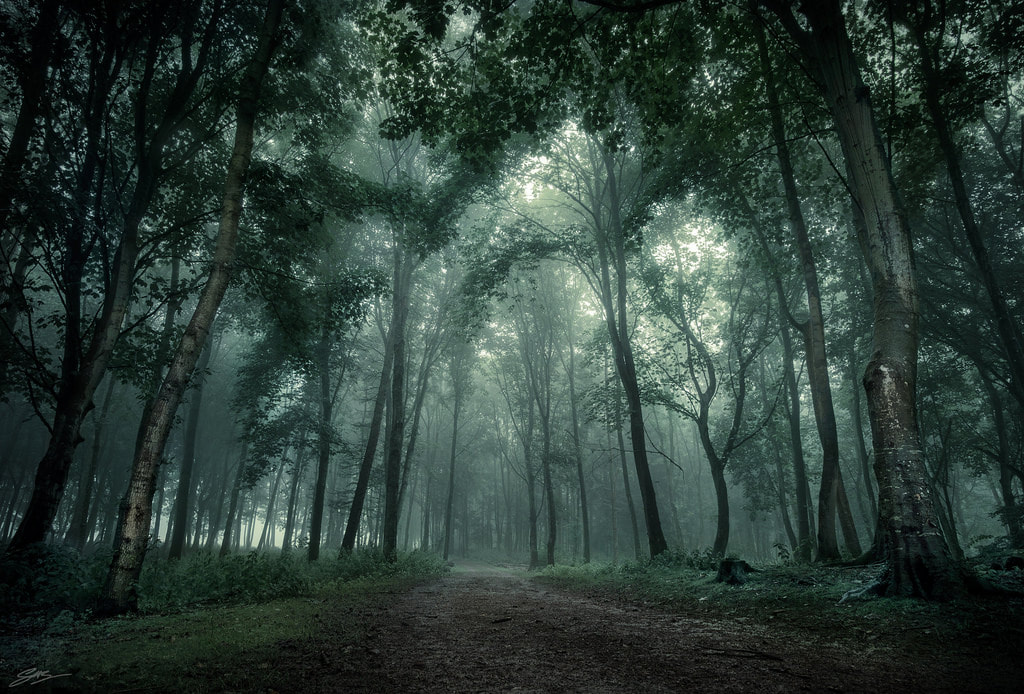Closely read the passage from Tess of the D'Urbervilles on pgs 72-73. While you are reading, consider how the author's use of setting develops the character of Tess for the reader. Please be sure to read the textual instructions to help support your analysis of this short passage.
Champ Forever
10/1/2018 07:24:58 pm
Thomas Hardy has connected this fictional character otherwise known as "tess" with reality or different parts of our reality. Remember that time when we were kids our parents used to tell us these strange fairy tales and mythological figures to teach us a lesson or to scare us. In this passage the character is represented as a confused person or somebody who is living in 2 dimensions at the same time. The author did the comparison of central figure with the other characters and it seemed that she had dominance over all of them. Her stealthiness had no match for anything in the jungle, those ghastling winds, breaking of branches had no idea what they have encountered today. So frightened was the midnight to see the spooked creatures scared of a human being. The author in the end produced a climax the fictional character was afraid of fictional things now that's something the author gave a messege that there are some things which are not real but we are scared of them but there are things which don't exist so why are we scared of them why? Thomas hardy has connected reality with imagination where the forest was a reality and the girls fear was just another fiction.
Name
10/1/2018 09:21:12 pm
The author’s use of setting develops the character of Tess, a woman who has had a child out of wedlock, shows the character’s shame and her agitation with the people of the world. The character Tess seems to be shameful when she watches the “winds, and snows, and rains, gorgeous sunsets, and successive moons at their full” it seems as though she was letting life pass her by because of how she never left her property in the day time. But still Tess seems like a “free spirit” who is tired of the ‘social norms’ of her time period as the passage goes on and it describes her surroundings. This is exemplified when the narrator says “The only exercise that Tess took at this time was after dark; and it was then, when out in the woods, that she seemed least solitary” and “she knew how to hit to a hair’s-breadth that moment of evening when the light and the darkness are so evenly balanced that the constraint of day and the suspense of night neutralize each other, leaving absolute mental liberty”. The character is portrayed as someone who fits in more with the natural and whimsical feel of the night and of the woods rather than whatever she seems to be trying to leave. Once Tess stepped into the woods she felt comfort in her lonesome and yet she eventually still feels the weight of other people’s judgement of her “peopled by phantoms and voices antipathetic to her, was a sorry and mistaken creation of Tess’s fancy- a cloud of moral hobgoblins by which she was terrified without reason...she looked upon herself as a figure of Guilt intruding into the haunts of innocence”
Edgar Wright
10/1/2018 10:06:33 pm
Thomas Hardy is able to develop the character of Tess in an unconventional way through the way the character describes a world that does not exist. Tess has the unfortunate fate of being a wed-locked marriage, which resulted in her having a child. The passage shows her fantasizing a forest where she is all alone. “She had no fear of the shadows; her sole idea seemed to be to shun mankind” (hardy). She would portray herself as a strong being that had the power to push people away. Hinting at how she wishes she could have walked away from the wed-locked. In reality, due to the time period the story takes place in, she had no control over any decision that led to her child's birth. “A cloud of moral hobgoblins by which she was terrified without reason. It was they that were out of harmony with the actual word, not she” (Hardy). Tess antagonizes the people around her that worsened her situation. In her world, the people that contradicted her moral beliefs were seen as out of harmony. Showing that her anger from the unwanted child has made her a stubborn and close-minded person. The author ends the passage with this phrase, “She had been made to break an accepted social law, but no law known to the environment in which she fancied herself such an anomaly” (Hardy). Since Tess knows that wedlock's were accepted social norms back in the day, she sees herself as the antagonist of this scenario. She ultimately decides to rebel and fight back against the hobgoblins of her own story.
tucker
10/1/2018 10:14:23 pm
In Thomas Hardy’s Tess of the D’Urbervilles, the setting impacts the overall depiction, or image, of the character Tess to the reader. It is mentioned that Tess is drawn toward solitude and nature in that “here, under her few square yards of thatch, she watched winds, and snows, and rains, gorgeous sunsets, and successive moons at their full.” While Tess only has a small space to herself, she still enjoys viewing all of nature from it. As Hardy continues the story, he explains that the character loves natural processes, like weather, so much so that they become part of who she is. She embodies all of the aforementioned rain, wind, snow, full moons, and breathtaking sunsets. Considering how Hardy shows that Tess likes to be by her lonesome and watch nature, his hints that the type of personality portrayed by the character is one of relaxation and simplicity. It is also expressed that Tess’s love for solitude might have been sparked by her poor relationship with others around her. She had a child out of wedlock in a nineteenth-century village in England; at this time period, this deserved shunning and judgement. This shows Tess’s reason for wanting to be alone and away from people, or being forced to be alone but enjoying it.
Pen
10/1/2018 10:14:52 pm
The author’s, Thomas Hardy, use of setting in this passage reveals how Tess is an outsider to the rest of the “world”: first to nature and the environment itself, to society and other people. It also reveals her attitude towards other people and how she perceives herself. The first paragraph describes how Tess would constantly watch the weather and scenery from her bedroom. Even though she is physically separated from the environment and nature, she feels more of a connection with it than she does with the other people around her; this is shown in “so close kept that at almost everybody thought she had gone away”. When day turned into night, Tess would then travel through the forest and in a way became part of the forest. When the light and dark “neutralized”, Tess was left with “mental liberty” and was free from other people and their ignorance; the light and darkness can represent the positive and negative judgements of others. When everyone is asleep and have no way to judge her, Tess is then free to simply be herself.The author uses the setting to personify Tess’ outlook on herself and society. As she travels through the forest, Hardy describes the elements of nature and compares it to human emotions; for example, “the midnights airs and gusts...were formulae of bitter reproach”. Hardy directly shows a correlation between the environment and the people who inhibit it; regardless of where or what time it is, people will always spread information and disapprove of other things or people. This includes Tess, who then judges the rest of society for not understanding this concept and the “actual world”.
Sleep Lover
10/1/2018 10:17:51 pm
Thomas Hardy’s use of setting helps to develop the character Tess by emphasizing her surroundings and how she viewed herself in the beginning of the passage compared to the end of the passage. At first, it is described how Tess kept herself isolated while “she watched winds, and snows, and rains, gorgeous sunsets, and successive moons at their full.” Tess is letting her life pass by her as she keeps herself hidden from the eyes of others, most likely due to the fact that she had a child out of wedlock, which wasn’t commonly accepted by the people of her time period. Tess would only leave her house after dark and the only place where she seemed to belong was out in the woods where “she knew how to hit a hair’s-breadth… [and] the plight of being alive becomes attenuated to its least possible dimensions.” This part of the passage shows a shift in the way that Tess thinks and how she begins to develop as she realizes that she wasn’t the one who was out of harmony with the rest of the world, in fact, it was those who surrounded her who were “out of harmony with the actual world.”
Phantom
10/1/2018 10:40:09 pm
The passage describes Tess's character as someone who cold a relatively distant around other people; although, she is a person that reminisces on the past.
V.Steele
10/2/2018 04:18:15 am
Thomas Hardy uses setting in this passage of Tess of the D'urbervilles to emphasize her personal isolation. Initially Tess was described as watching scenery go by while she isolated herself from society. Thomas Hardy stated “she watched winds, and snows, and rains, and gorgeous sunsets, and successive moons at their full.” Later in the passage however Hardy changed the way he described Tess’s interactions with the scene. Tess wasn't described as just looking at the scenery around her but it was shown that she was a part of the scene, a part of the world around her. Although she was isolated from the people, where she found a true connection was within the scenery she was taken in. Thomas Hardy stated “Her flexuos and stealthy figure became part of the scenery.” The things around her became of the inner workings of her mind. Hardy showed that the natural processes that she watched became psychological. They could show and display her feelings and this made her feel especially connected to it. “A wet day was the expression irremediable grief at her weakness…” Tess’s lust for isolation shows the corruption of the world and people around her. After having her child that later died, she became isolated. She was possibly forcibly shunned out of the public eye and this is what warranted her close connections with nature. Comments are closed.
|
Blog Post Rubric
Archives
February 2023
Categories
All
|

 RSS Feed
RSS Feed